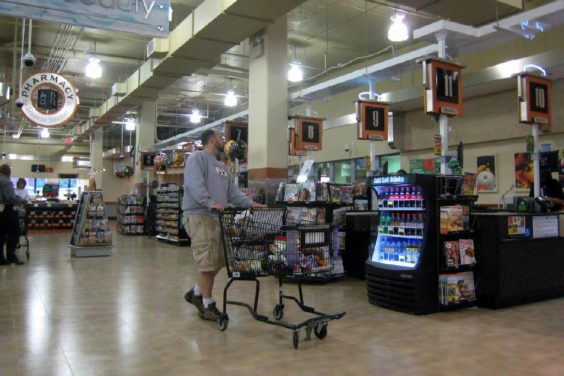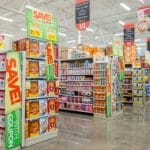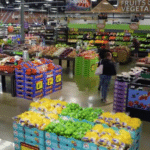
A grocery store can have all the modern bells and whistles – loyalty programs, digital coupons, online ordering. But what’s really important to you? A recent study says if supermarkets don’t get two key things right, customers are likely to leave and never come back.
According to PricewaterhouseCoopers’ report “Experience Radar 2013: Lessons from the U.S. Grocery Industry”, price is the top influencer of what people buy and where they choose to shop, cited by 37% of shoppers surveyed. But that’s not one of the two key things mentioned above, because many price-conscious customers say they’re willing to bend on that point – they’ll pay more for a better shopping experience. And with increasing competition from big-box stores and discounters that can beat them on price, many grocery stores aren’t trying to win over customers on prices alone – the report says they’ve increasingly “turned to experience to grow the top line and maintain margins.”
And for many, the best experience is a speedy one – making that the first key thing a supermarket needs to get right in order to keep its customers. “We want to get in and out of grocery stores as quickly as possible,” the report reads. “This impatience makes convenience a top influencer of purchase… and also a top driver of great experiences.” Key to convenience is short checkout lines, which explains why many grocery stores are tinkering with the way they handle checkout.
“Customers have told us they do not like waiting in long lines,” Kroger president and COO Rodney McMullen said last September. “Based on that feedback, we developed a solution that has reduced the average amount of time a customer waits in line to check out to about 30 seconds today compared to around 4 minutes in the past.” One way Kroger reduced wait times is with “QueVision”, a system that’s been tested and rolled out at Kroger stores over the past few years. Sensors detect how many shoppers are coming in and out of the store, and TV screens mounted above checkout lanes tell staff how many lanes are currently open, and how many will be needed to accommodate those who will soon finish their shopping. “Our customers tell us they notice the difference and we are delivering a shopping experience that makes them want to return,” McMullen said. Other stores have experimented with bank- and airport-like systems in which customers wait in a single line, and proceed to the next available cashier.
However they manage to shorten wait times, grocery stores may find it’s worth the effort. “Customers want service on demand, and will walk out if they do not get it,” the PwC report says. That matches the findings of a 2010 Progressive Grocer study, which found that 75% of shoppers said a positive checkout experience makes their overall opinion of the store “much better,” and makes them more likely to shop there again. One in five shoppers, PwC says, “do not repurchase after a bad experience.”
But bad experiences are not just about wait times. Smiles and service help, too – making that the second key thing that supermarkets need to get right. Almost three-quarters of customers shop at more than one grocery store, PwC says. And after a bad experience – such as rude, inattentive or unavailable employees – shoppers “are easily frustrated and quick to switch grocers.” And few actually tell the store what made them want to leave and never come back. But they do tell their friends. 46% do not report issues to their grocer, the study finds, but 92% are willing to share their bad experiences with others.
So if speed is important, do you feel better about a store if your cashier is brusque but efficient? If customer service is important, is it ok if your cashier is friendly, but slow? When it comes to providing both speed and service, grocery stores can’t always have the best of both worlds. A 2009 Wall Street Journal report cited one study that said supposedly speed-obsessed shoppers were actually more satisfied with slower cashiers. And a spokesperson for Publix told the paper that many customers will happily put up with longer wait times and “wait in a different line just to be served by their preferred cashier.”
Stores will keep trying to keep us pleased and keep us coming back, using the results of studies and technology. But if customer service is a science, it remains a stubbornly inexact one.















